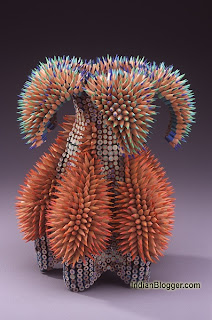Although this most recent
wednesday lecture was agreeably disorganized, I think many interesting points were brought up. The "suburb-effect", as he described it, probably influences your lives, although you may not realize it. I thought it was interesting how the suburbs were created, in his opinion, to get away from the hustle and bustle and dirt of the city. How they began as hybridized rural-urban living areas with connections to nature but evolved into sanctuaries of boredom, repetitiveness and uneventful lives.
At first I remarked upon the unconnected nature of the lecture's points, but now I realize that some may be applied to design, even if the comparisons are reaching.
In design, products have been simplified and had their appearance toned down in an effort to reduce user confusion and wariness towards complicated features. While the basic idea is helpful; create a user friendly layout to familiarize the public and increase sales, the reality is that a slew of indistinguishable products have overwhelmed our culture, lacking unique design and sacrificing aesthetic interest for comfort or ease of use.
I think the challenge for up-and-coming designers is to create quality, lasting products that introduce new and exciting layouts without forgetting about the all important aspects of ergonomics and simplicity.
Let's have this first one, not the second we are so familiar with.


 This past weekend my family and I went to New York City. We visited the 9/11 Memorial and I found the design of the memorial very interesting and creative. The memorial consists of two large waterfalls leading into reflecting pools which are located where the towers once stood. On the panels around the pools are the names of every person who died in the 2001 and 1993 attacks. A variety of trees surround the pools. When I got home I looked up the design of the memorial on their website and discovered that it was chosen from an international design competition consisting of 5,201 submissions. The website shows what the finished memorial is supposed to look like and it was neat to compare with what it looks like while it is still in the process of being built. I found that the memorial is very environmentally friendly as well. The website also says that "its design conveys a spirit of hope and renewal, and creates a contemplative space separate from the usual sights and sounds of a bustling metropolis" which is a feeling I really got when at the memorial. Overall I think the design is a very successful way to commemorate such a significant tragedy and to remember all of those who gave their lives to help our country. Here are some pictures I took while at the memorial:
This past weekend my family and I went to New York City. We visited the 9/11 Memorial and I found the design of the memorial very interesting and creative. The memorial consists of two large waterfalls leading into reflecting pools which are located where the towers once stood. On the panels around the pools are the names of every person who died in the 2001 and 1993 attacks. A variety of trees surround the pools. When I got home I looked up the design of the memorial on their website and discovered that it was chosen from an international design competition consisting of 5,201 submissions. The website shows what the finished memorial is supposed to look like and it was neat to compare with what it looks like while it is still in the process of being built. I found that the memorial is very environmentally friendly as well. The website also says that "its design conveys a spirit of hope and renewal, and creates a contemplative space separate from the usual sights and sounds of a bustling metropolis" which is a feeling I really got when at the memorial. Overall I think the design is a very successful way to commemorate such a significant tragedy and to remember all of those who gave their lives to help our country. Here are some pictures I took while at the memorial:





